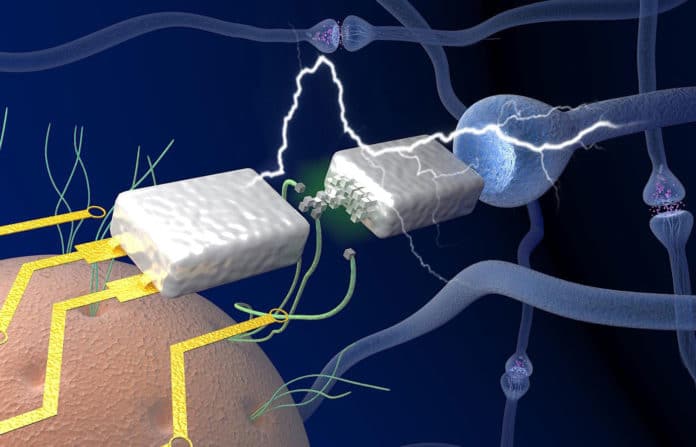A team at the University of Massachusetts Amherst, have demonstrated a type of diffusive memristor, fabricated from the protein nanowires harvested from the bacterium Geobacter sulfurreducens, that functions at the biological voltages of 40-100 mV.
The greatest obstacle to neuromorphic computing, and one that caused it to appear to be unreachable, is that most customary computers work at more than 1 volt. At the same time, the brain imparts signals called action potentials between neurons at around 80 millivolts – many times lower.
After decades of experiments, scientists now achieved memristor voltage in the range similar to conventional computers, but getting below that seemed improbable.
Computer engineering researcher and co-author Jun Yao said, “This is the first time that a device can function at the same voltage level as the brain. People probably didn’t even dare to hope that we could create a device that is as power-efficient as the biological counterparts in a brain. Still, now we have real evidence of ultra-low-power computing capabilities. It’s a conceptual breakthrough, and we think it’s going to cause a lot of exploration in electronics that work in the biological voltage regime.”
Microbiologist and co-author Derek Lovely said, “The electrically conductive protein nanowires offer many advantages over expensive silicon nanowires, which require toxic chemicals and high-energy processes to produce. Protein nanowires also are more stable in water or bodily fluids, an important feature for biomedical applications. For this work, the researchers shear nanowires off the bacteria, so only the conductive protein is used.”
Scientists decided to put the purified nanowires through their paces to observe their capabilities at different voltages.
They experimented with a pulsing on-off pattern of positive-negative charge sent through a tiny metal thread in a memristor, which creates an electrical switch. They used a metal thread because protein nanowires facilitate metal reduction, changing metal ion reactivity, and electron transfer properties.
Lovely says, “This microbial ability is not surprising, because wild bacterial nanowires breathe and chemically reduce metals to get their energy the way we breathe oxygen.”
The device creates new branching and connections as the on-off pulses develop changes in the metal filaments. It creates an effect similar to learning – new connections – in a real brain.
Yao said, “You can modulate the conductivity, or the plasticity of the nanowire-memristor synapse so it can emulate biological components for brain-inspired computing. Compared to a conventional computer, this device has a learning capability that is not software-based.”
Scientists are now planning to follow up this discovery with more research on mechanisms and to “fully explore the chemistry, biology and electronics” of protein nanowires in memristors.
Journal Reference:
- Bioinspired bio-voltage memristors. DOI: 10.1038/s41467-020-15759-y
